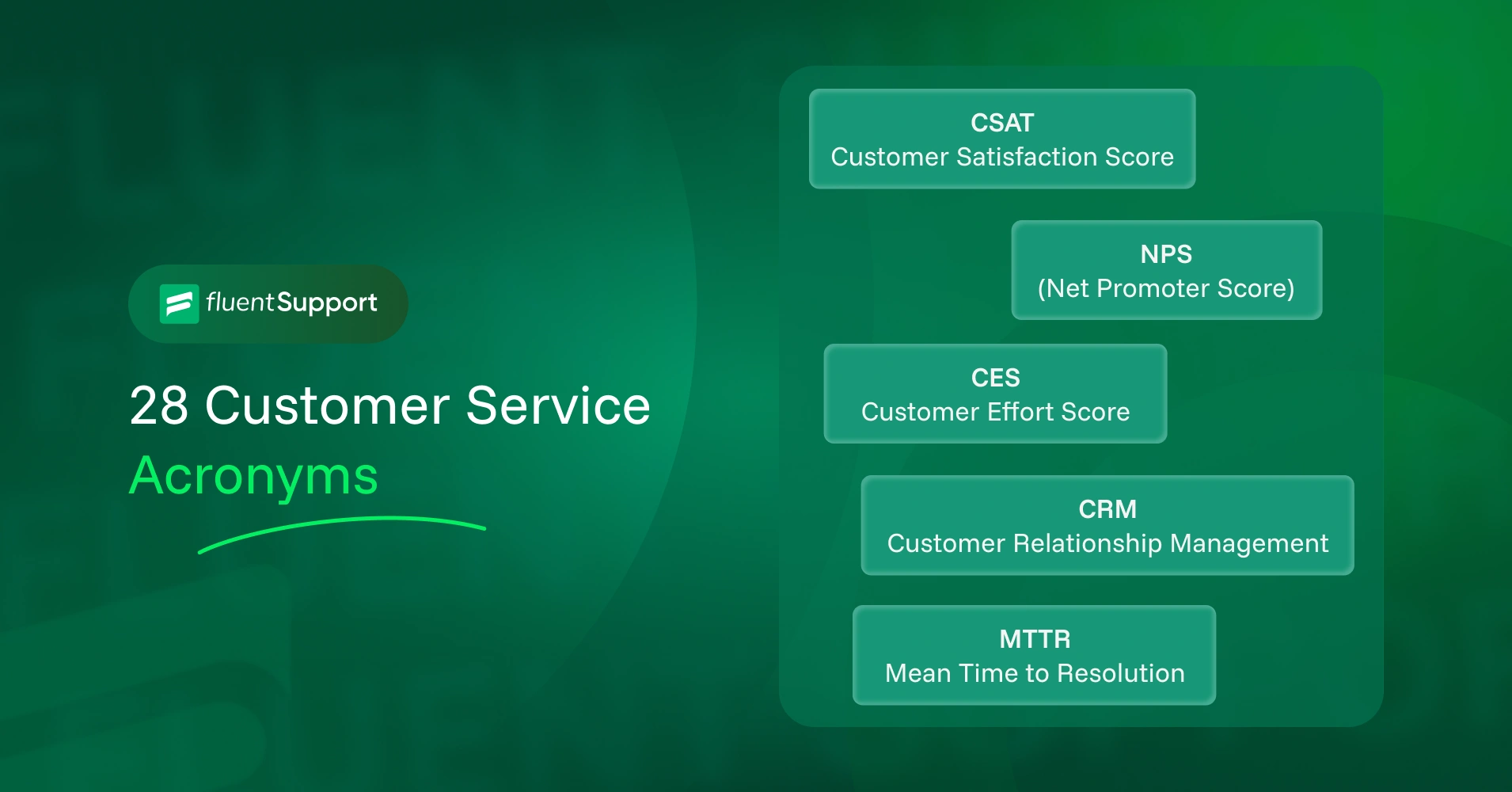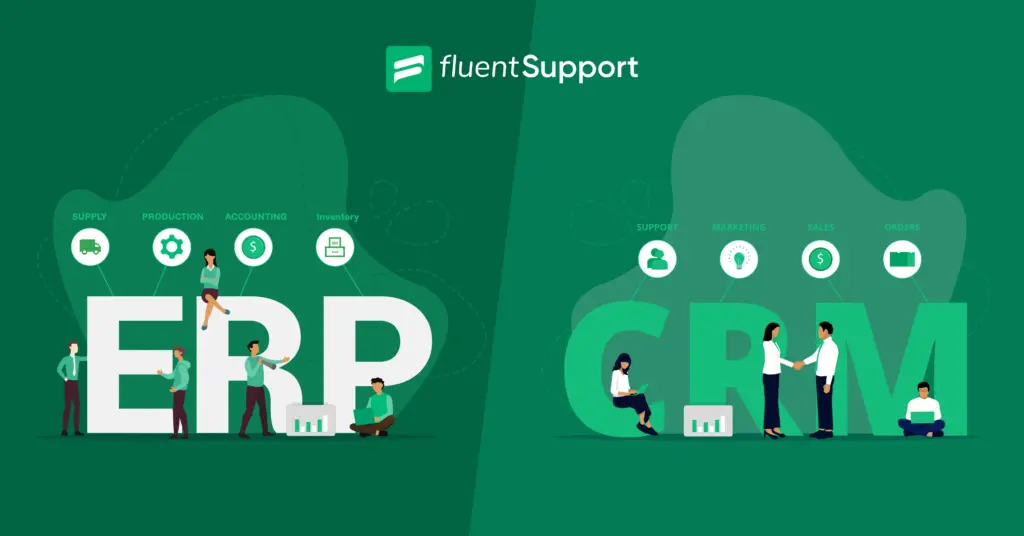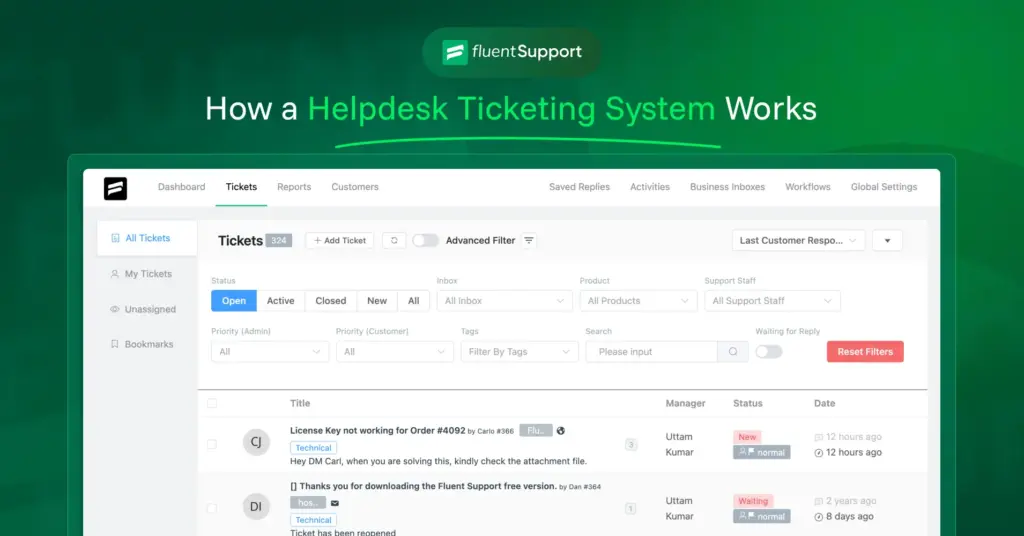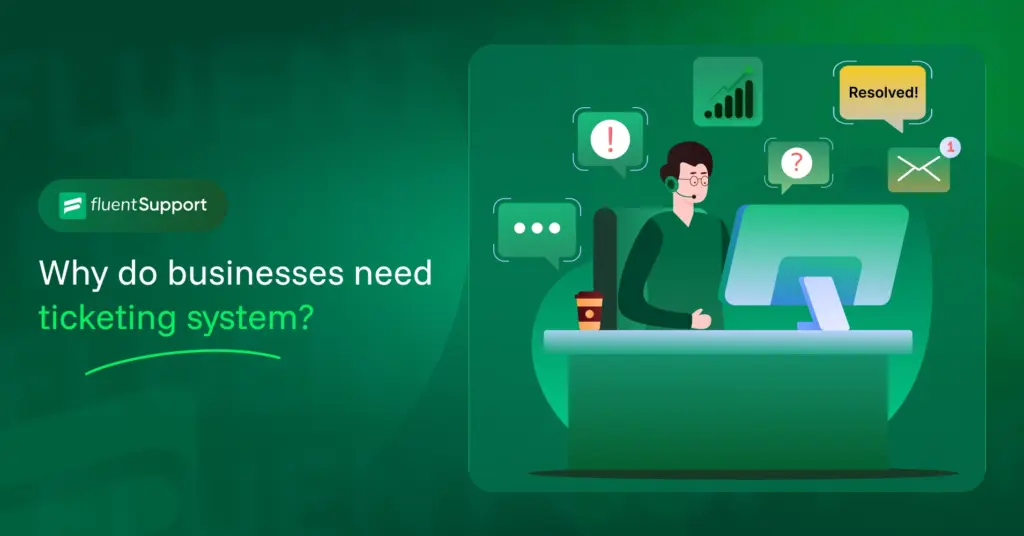
28 Customer Service Acronyms for Clearer, Faster Communication
By Md. Sajid Sadman
November 7, 2025
Last Modified: November 13, 2025
Customer service has its own language. In a single conversation, you might hear CSAT, SLA, AHT, or FCR without anyone stopping to explain them.
For seasoned teams, these acronyms make communication fast. But if you are new, they can feel like a wall of confusion.
This guide breaks everything down in simple terms so you know what each acronym means, when it is used, and why it matters inside a support team.
What are customer service acronyms?
Customer service acronyms are short forms that support teams use to communicate quickly. They replace long, repetitive phrases with simple codes that make conversations easier to follow and much faster to manage.
You will hear them in almost every support conversation.
AHT for handling time.
CSAT for satisfaction.
SLA for response expectations.
FCR for resolving issues in the first interaction.
These terms create a shared language across the team. When agents are juggling tickets, moving between channels, or managing high-volume hours, acronyms keep instructions clear and the workflow focused.
They also make reporting smoother. Instead of repeating full metric names, teams rely on familiar abbreviations that instantly communicate what needs attention.
Once you know these acronyms, the entire customer service environment becomes easier to understand. Conversations flow better, decisions move faster, and you can follow even the busiest support discussions with confidence.
Quick overview of all customer service acronyms
Before we break everything down in detail, here’s a simple overview table that gives you a clear snapshot of the acronyms you’ll see throughout this guide. Think of it as your quick reference point. You can skim the list now and then dive deeper into each acronym in the sections that follow.
Just explore the table for context and then jump into the full explanations to understand how each term actually works inside real support operations.
Core performance acronyms
Acronym | Meaning | What It Tells You |
CSAT | Customer Satisfaction Score | Shows how happy customers are after a support interaction. |
NPS | Net Promoter Score | Measures loyalty and likelihood to recommend your brand. |
FCR | First Contact Resolution | Tracks how often issues are solved on the first attempt. |
AHT | Average Handle Time | Measures how long agents spend handling a customer issue. |
ART | Average Response Time | Shows how quickly your team replies to incoming messages. |
TTR | Time to Resolution | Reflects total time taken to fully resolve a ticket. |
CES | Customer Effort Score | Measures how easy it was for customers to get help. |
FRT | First Response Time |
Operational acronyms
Acronym | Meaning | What It Tells You |
SLA | Service Level Agreement | Sets expectations for response and resolution times. |
CRM | Customer Relationship Management | Stores customer data so agents reply with full context. |
KB | Knowledge Base | A library of articles that help customers self-serve. |
SOP | Standard Operating Procedure | Step-by-step rules that keep service consistent. |
WFM | Workforce Management | Helps teams schedule and staff support operations efficiently. |
CX | Customer Experience | How customers feel about your brand across all touchpoints. |
VoC | Voice of the Customer | Feedback used to improve service and products. |
Technical and channel acronyms
Acronym | Meaning | What It Tells You |
IVR | Interactive Voice Response | Shows how well your phone menu guides callers without human help. |
VoIP | Voice over Internet Protocol | Lets teams handle calls online with stable quality and lower cost. |
CTI | Computer Telephony Integration | Gives agents instant customer info the moment a call arrives. |
OMC | Omnichannel Support | Keeps conversations connected across channels without repetition. |
CMS | Call Management System | Helps manage high call volumes and reduce long wait times. |
API | Application Programming Interface | Connects your tools so data moves automatically between them. |
CEM | Customer Experience Management | Helps track and improve the full customer journey with data. |
MTTR | Mean Time to Resolution | Shows how fast issues get fully resolved from start to finish. |
De-escalation acronyms
Acronym | Meaning | What It Tells You |
HEAT | Hear, Empathize, Apologize, Take Action | Calms tense calls and moves to next steps fast. |
HEART | Hear, Empathize, Apologize, Respond, Thank | Adds clear response and gratitude. Reassures the customer. |
LAST | Listen, Apologize, Solve, Thank | Quick structure for short chats or retail. |
CARES | Communication, Accountability, Responsiveness, Empathy, Solution | Rebuilds trust during sensitive issues. |
CARP | Control, Acknowledge, Refocus, Problem-solve | Steadies heated talks and brings focus back to solutions. |
Core performance acronyms
These acronyms define how well your support team actually performs. They measure speed, satisfaction, and how smooth the entire support experience feels for customers.
CSAT (Customer Satisfaction Score)
CSAT shows how satisfied customers feel after an interaction. Teams usually collect it with a quick survey like “How satisfied were you with the support you received?” This score reveals whether your support conversations are hitting the mark or leaving customers frustrated. It is one of the clearest indicators of day-to-day service quality.
NPS (Net Promoter Score)
NPS measures customer loyalty by asking how likely someone is to recommend your brand. It helps you see the bigger picture. Even if a customer is satisfied today, NPS shows whether they trust your company enough to promote it. Brands with higher NPS tend to grow faster because loyal customers naturally spread the word.
FCR (First Contact Resolution)
FCR tells you the percentage of issues solved in a single interaction. If customers must contact support three or four times for a simple issue, trust drops fast. A strong FCR means your team understands the product well, asks the right questions, and delivers solutions without back and forth.
AHT (Average Handle Time)
AHT measures how long an agent spends handling a customer problem from start to finish. It includes conversation time, hold time, and any follow-up work. AHT helps managers balance speed and quality. Too slow suggests inefficiency. Too fast suggests rushed, low-value conversations.
ART (Average Response Time)
ART tracks how quickly your team replies after a customer submits a question. It is one of the first metrics customers feel. Slow initial responses set a negative tone for the entire experience. A healthy ART signals reliability and attentiveness during busy hours.
TTR (Time to Resolution)
TTR measures the complete time it takes to solve a customer issue. Unlike AHT, which focuses on agent workload, TTR reflects the customer’s actual waiting experience. It includes escalations, internal checks, and all back and forth needed to close the ticket. Lower TTR usually means a smoother support process.
CES (Customer Effort Score)
CES tracks how easy or difficult it was for a customer to get help. If a customer needs to repeat information, navigate confusing steps, or chase follow-ups, the effort score goes up and satisfaction drops. A low effort score often signals a support system that feels simple and friendly.
FRT (First Response Time)
FRT measures how long it takes for your team to send the very first reply to a customer’s message. It sets the tone for the entire conversation. A fast FRT shows customers you’re attentive and ready to help. A slow one creates doubt before the real conversation even begins.
Operational acronyms (systems, standards, and strategy)
Operational acronyms explain how support teams stay organized behind the scenes. These terms guide workflows, structure processes, and keep everything running without chaos.
SLA (Service Level Agreement)
An SLA is a promise between your support team and your customers. It defines how fast you’ll respond and how quickly issues will be resolved.
Clear SLAs help set expectations, prevent misunderstandings, and keep your team focused on the right priorities. When SLAs slip, customer trust slips with them.
CRM (Customer Relationship Management)
A CRM stores every detail about your customers such as past conversations, purchases, behavior, and preferences.
It gives agents full context before they reply, which leads to faster answers and more personal interactions. Without a CRM, your team is basically working without visibility.
KB (Knowledge Base)
A Knowledge Base is a self-service library where both customers and agents can find answers instantly.
It reduces repetitive tickets, keeps solutions consistent, and helps new agents get up to speed faster. A strong KB improves support quality without adding workload.
SOP (Standard Operating Procedure)
An SOP provides a step-by-step checklist for recurring tasks like refunds, ticket escalation, or onboarding.
It removes guesswork and ensures every agent follows the same reliable process. SOPs create stability in teams where speed and accuracy matter every minute.
WFM (Workforce Management)
WFM tools help support teams plan shifts, predict ticket volume, and balance workloads.
Good WFM prevents long wait times during busy hours and protects agents from burnout during spikes. It keeps your support coverage steady when demand fluctuates.
CX (Customer Experience)
CX (Customer Expereince) reflects how customers feel about your brand across all touchpoints such as support, product, website, and onboarding.
Support plays a major role because every interaction shapes trust. Strong CX leads to higher loyalty, better reviews, and long-term retention.
VoC (Voice of Customer)
VoC collects customer feedback from surveys, chats, emails, ratings, and reviews.
Support teams use this data to spot patterns, identify friction points, and improve processes. VoC turns customer sentiment into real, actionable insights.
Technical and channel acronyms
These acronyms describe the systems that keep your support workflow running in the background. They shape how calls move, how tickets route, and how fast teams respond across channels.
IVR (Interactive Voice Response)
An automated phone system that guides callers using menu options. IVR helps route people to the right team without waiting for a human. When designed well, it cuts down call transfers and reduces customer frustration.
VoIP (Voice over Internet Protocol)
Technology that lets your team make and receive calls through the internet instead of traditional phone lines. VoIP keeps call quality stable, reduces costs, and makes remote support teams possible.
CTI (Computer Telephony Integration)
Software that connects your phone system to your computer or CRM. The moment a call comes in, CTI pulls up the customer’s details so your agents don’t start the conversation blind. It saves time and makes responses more accurate.
OMC (Omnichannel)
Omnichannel is a support model where every channel works together. Phone, email, chat, and social all share the same history so customers never repeat themselves. OMC keeps the experience smooth even when people switch channels.
CMS (Call Management System)
A system used in call centers to organize large volumes of inbound and outbound calls. It tracks wait times, assigns calls to agents, and monitors performance. If your goal is lower queues and faster answers, CMS plays a central role.
API (Application Programming Interface)
APIs let your support tools talk to each other. For example, your CRM can send customer data to your ticketing system in real time. This automation reduces manual work and improves accuracy across every interaction.
CEM (Customer Experience Management)
A structured approach to tracking, analyzing, and improving the entire customer journey. CEM brings together data from multiple tools to help support teams understand patterns, spot issues early, and fix them before they spread.
MTTR (Mean Time to Resolution)
The average time it takes to resolve an issue after it’s reported. MTTR helps teams understand how efficient their process really is. Shorter MTTR often means fewer delays and better customer confidence.
De-escalation acronyms (the 5 most useful frameworks in customer service)
When a conversation gets tense, agents need a simple structure that keeps them calm, steady, and focused on solving the real issue.
These five acronyms are the ones support teams use the most because they work in almost every customer scenario.
1. HEAT: hear, empathize, apologize, take action
HEAT is the go-to method for handling frustrated customers.
How it works
- Hear the full concern without jumping in.
- Empathize with how the issue affects them.
- Apologize sincerely.
- Take Action by explaining what you will do next.
Example
A customer is upset about a delayed refund.
You listen fully, acknowledge their frustration, apologize for the wait, and start the refund check on the spot.
2. HEART: hear, empathize, apologize, respond, thank
HEART adds one more step before closing the loop.
It works well when customers want extra clarity.
How it works
- Hear the problem.
- Empathize with their situation.
- Apologize for the trouble.
- Respond with the exact next steps.
- Thank them for their patience.
Example
A customer cannot access their account.
After apologizing, you share the reset steps clearly and thank them for staying patient while you checked their details.
3. LAST: listen, apologize, solve, thank
LAST is simple and fast.
Perfect for short calls, chats, or retail interactions.
How it works
- Listen without interrupting.
- Apologize with care.
- Solve the issue or start the fix.
- Thank them before closing.
Example
A customer receives the wrong product.
You apologize, arrange the replacement instantly, and thank them for reporting it early so your team can prevent repeat issues.
4. CARES: communication, accountability, responsiveness, empathy, solution
CARES is used when you need to rebuild trust and guide the customer through a longer or more sensitive issue.
How it works
- Communication: keep them fully updated.
- Accountability: take responsibility for resolving the issue.
- Responsiveness: reply quickly and consistently.
- Empathy: acknowledge how the situation impacts them.
- Solution: deliver a clear fix.
Example
A billing error caused extra charges.
You own the mistake, update the customer regularly, and deliver a corrected invoice without delay.
5. CARP: control, acknowledge, refocus, problem-solve
CARP is used when the conversation becomes emotional or heated.
It helps agents stay calm and redirect the energy toward a solution.
How it works
- Control the tone by staying steady.
- Acknowledge the customer’s frustration.
- Refocus the conversation on the real issue.
- Problem-solve with clear steps.
Example
A customer starts venting about multiple past issues.
You stay calm, acknowledge their frustration, bring the focus back to the current problem, and outline what you will fix right now.
Wrapping up
So now you have a clear view of the acronyms that shape modern customer service. You learned what they mean, how they work, and why support teams rely on them every single day. From performance metrics to operational terms to technical tools and de-escalation frameworks, each acronym adds structure to the fast pace of support.
More importantly, you now understand how these shortcuts bring clarity to busy teams. They help agents move faster, communicate better, and stay aligned when customer expectations are high.
Use this guide as a reference whenever you run into an unfamiliar term. With these acronyms in your toolkit, every report, meeting, and support conversation becomes easier to follow and far more confident to handle.
Start off with a powerful ticketing system that delivers smooth collaboration right out of the box.












Leave a Reply